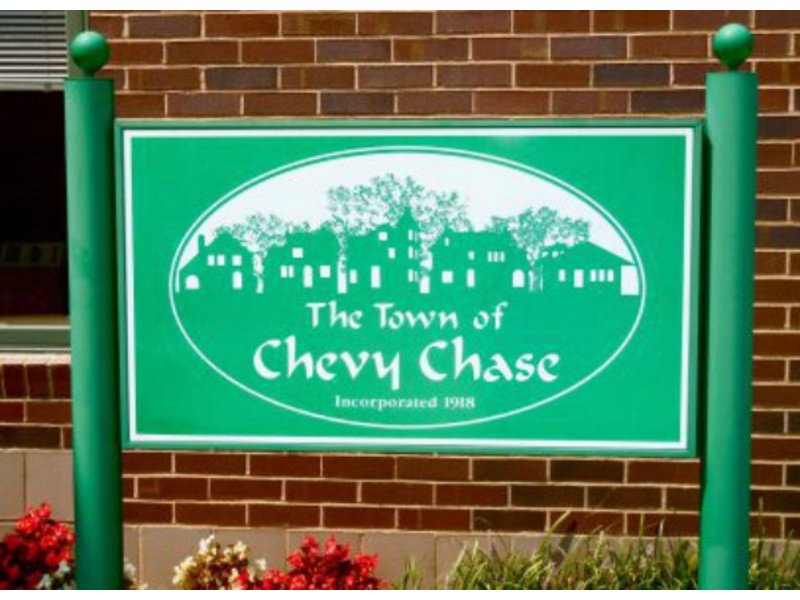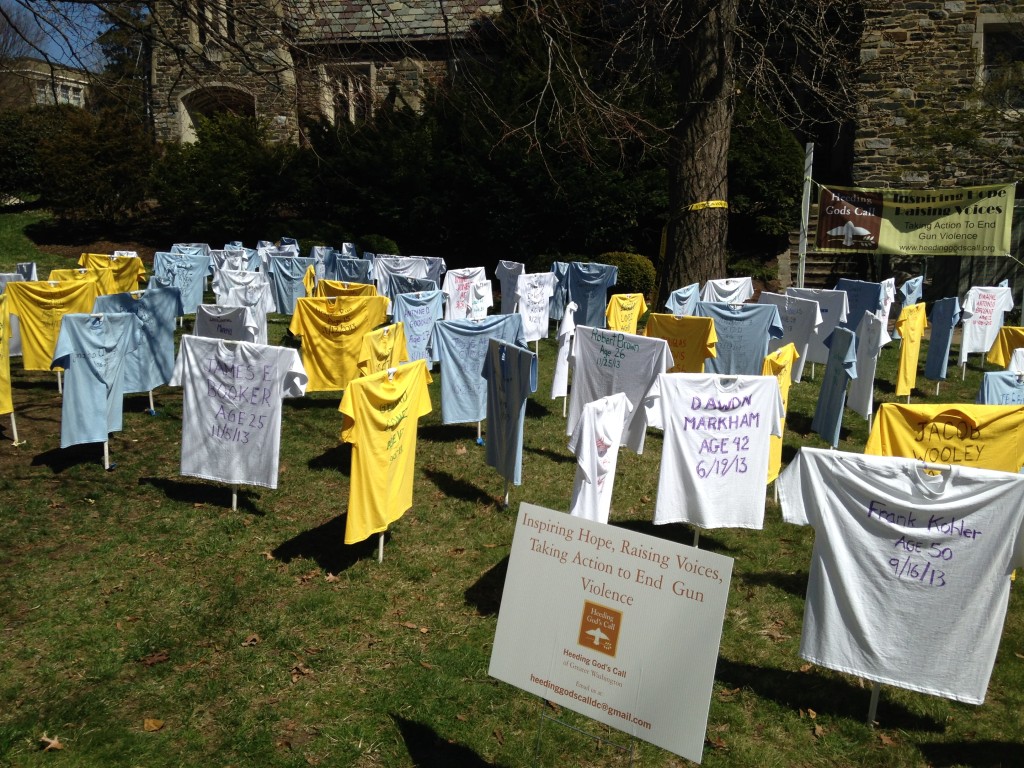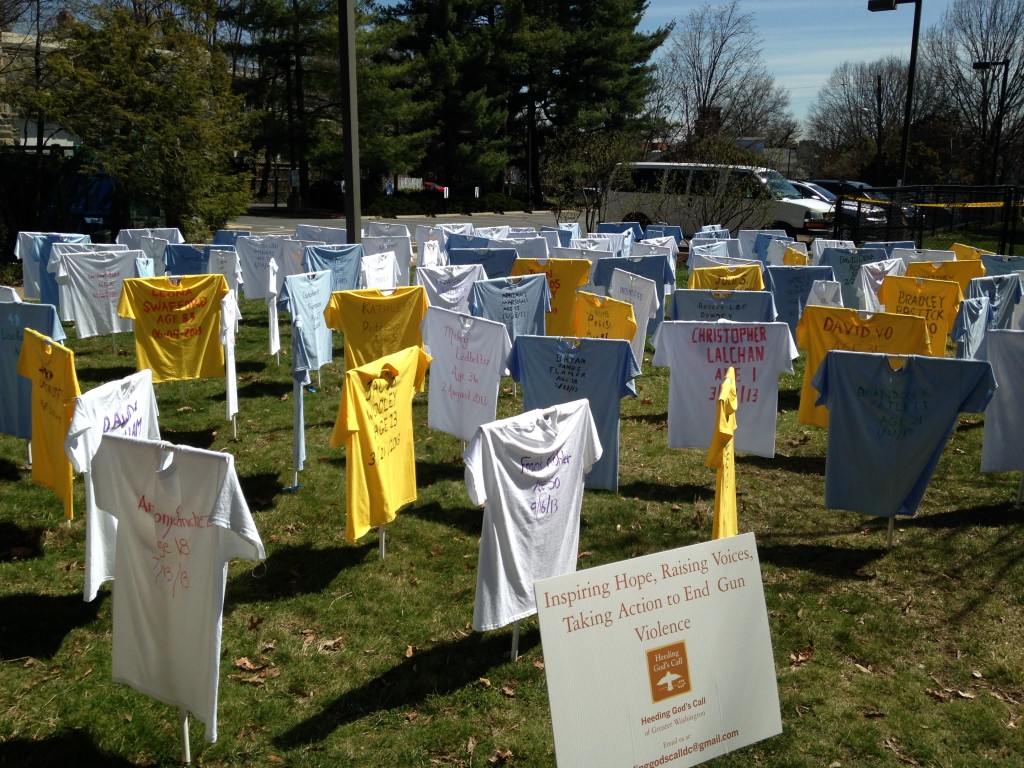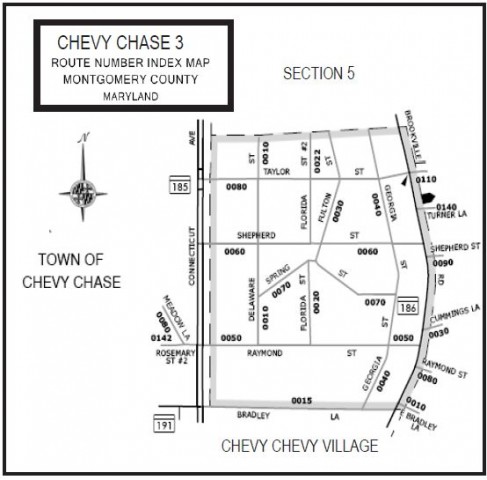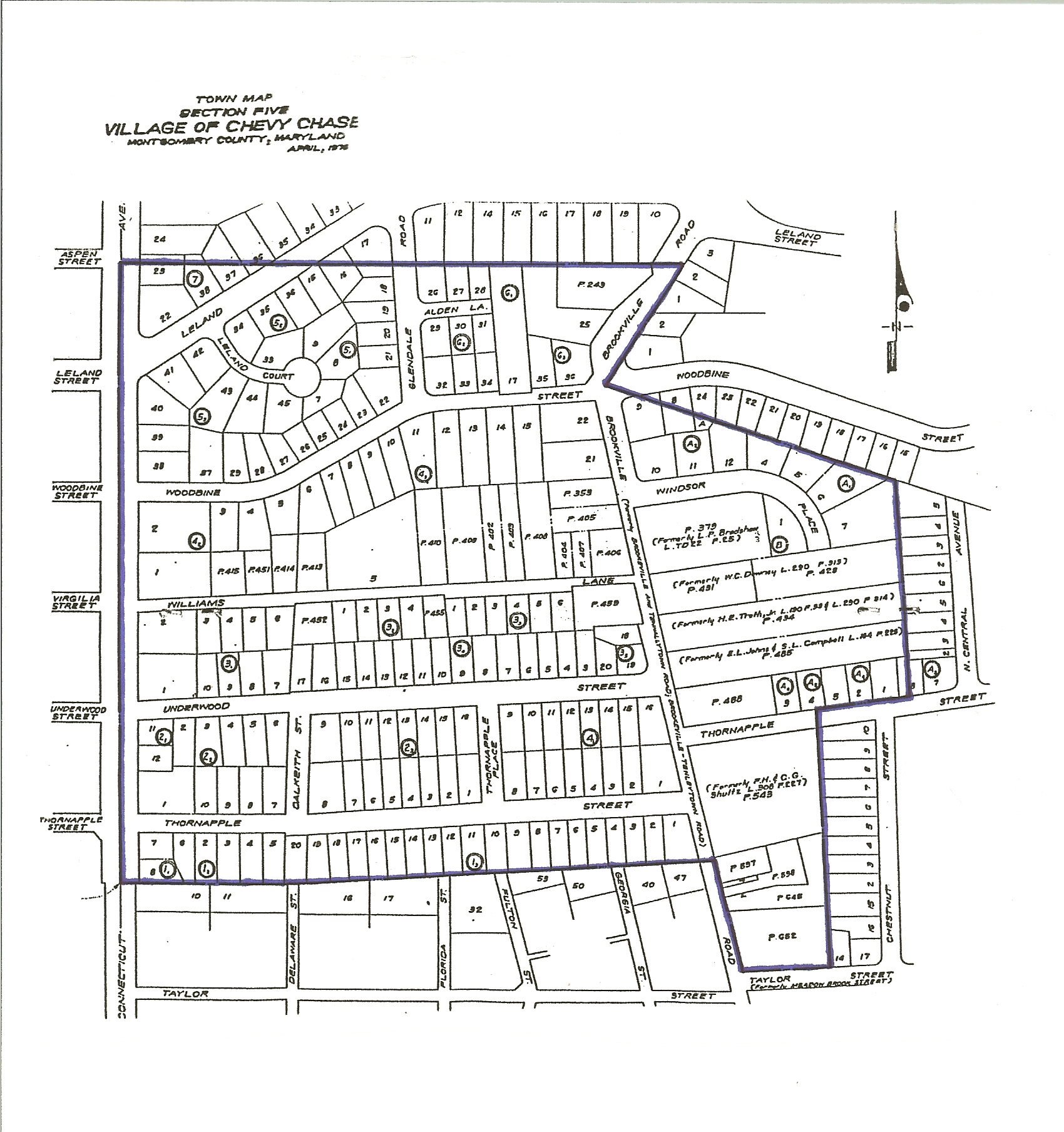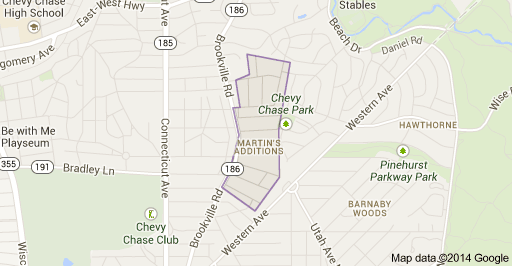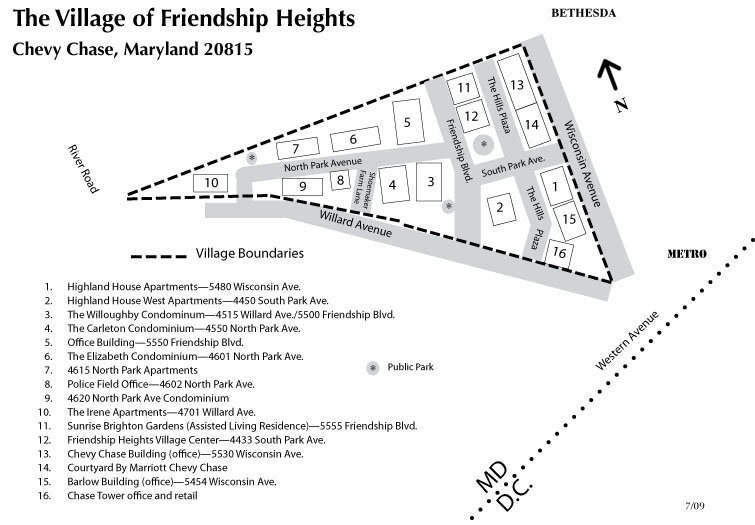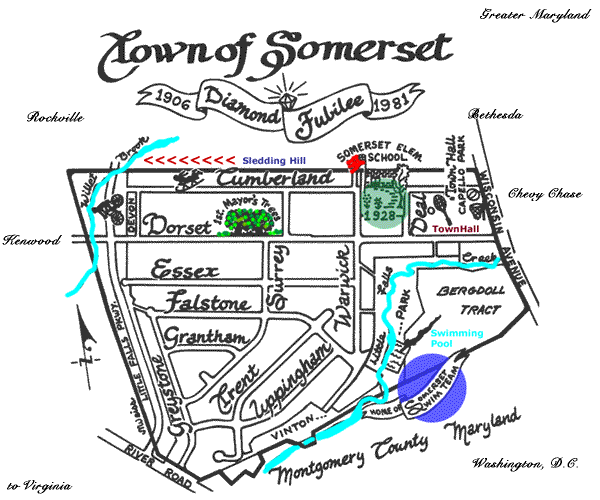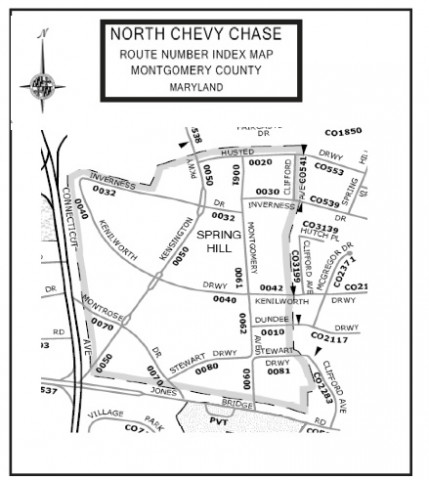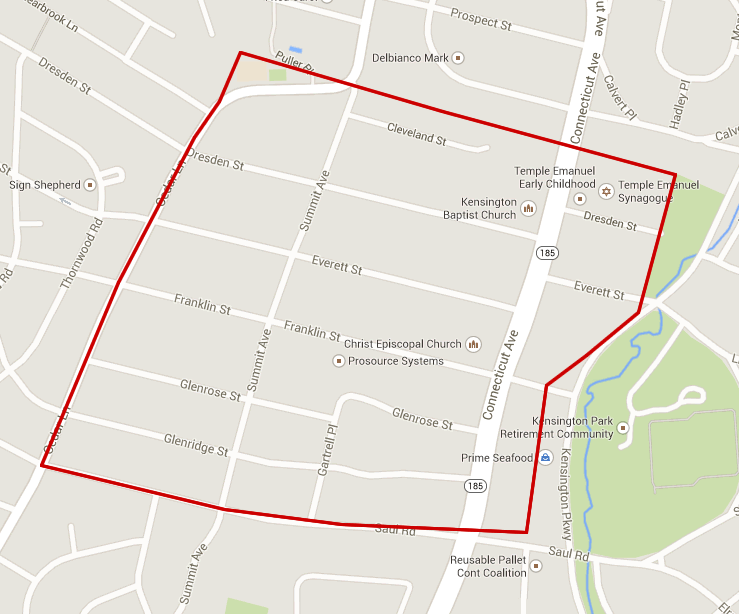Outside of the Town Hall
Democracy in Action?
Two incumbents, Pat Burda and John Bickerman, were on the ballot for the two open seats. No other candidates filed. Bickerman was reelected but Burda got defeated by a write-in candidate, Fred Cecere.
So far, this just looks like democracy in action. And indeed, surprise winner Fred Cecere promoted that view in his one public message on the town’s unofficial listserve since his election:
A week ago, I had no intention of being a candidate for Chevy Chase Town Council. When I was approached by a neighbor and asked if I would accept a write-in vote, I felt honored, but skeptical. I was overwhelmed and humbled by the many people who voted for me Tuesday.
Stealth Candidate
Except that this email does not reveal the depth of secrecy around his stealth candidacy. His supporters actively worked to keep the large majority of people from knowing that he was running as a write-in candidate. An odd approach for someone who has claimed since the election to value “transparency”–one that was labelled a “coup” and a “conspiracy” by various residents.
The level of secrecy behind Fred Cecere’s stealth campaign was only revealed when a town resident exposed publicly an email from Ed Albert:
Vote John Bickerman
Write in “Fred Cecere”
DO NOT vote for anyone else.
We have worked very hard to keep this among the right group. Pls only give those names to those you feel 100% certain are like minded. If you check with me first. I will let you know if they are already covered.
Please vote today for John Bickerman and write-in Fred Cecere. Together, we can TAKE BACK OUR TOWN!. Between 5-8 is ideal for the element of surprise, but anytime is better than no vote.
Ed Albert was one of the prime organizers behind the effort. People like Albert and others who think like him apparently believe that only “the right” people should vote. Rather than run an open campaign based on the issues, they chose to run a secret, stealth campaign. Turnout is very low in municipal contests, especially uncontested ones. The organizers of this stealth candidacy took advantage to get their man elected. As you can imagine, this trickery hasn’t gone down well with all residents.
Participation of John Bickerman and Al Lang?
Two councilmembers seemingly have close links to this rather un-neighborly campaign.
John Bickerman is a professional mediator who heads the two-person Bickerman Dispute Resolution firm and teaches dispute resolution at Cornell. His website says that he strives to provide “ethical dispute resolution.”
Nevertheless, Bickerman apparently was aware of the stealth write-in candidate and defended it at length publicly (see also this Washington Post article) even though his election statement touted his commitment to “transparent and open governance.” Despite this public commitment, Bickerman has refused to answer questions about his involvement except to write:
I am truly saddened by the turmoil and divisiveness that this election has brought to my Town. For the last 25 years, I have devoted my life to resolving conflict and helping parties avoid litigation. Since becoming a member of the Council, I have sought to find ways to find compromise and reduce conflict on the Council.
Except that his actions were anything but transparent–even after the election was over. It’s nice that he wants to “heal some of the open wounds” but it seems insincere not to mention unethical when he helped create them in the first place and did not answer public questions about his participation. More cynical than healing.
Councilmember Al Lang, not up for election, also appears to have been in on the game. Though he also refused to answer public questions on the town listserv about his participation, he handed in Fred Cecere’s financial disclosure form to the Chair of the Town Ethics Commission at the end of Election Day. Lang is tipped to become the Town’s mayor. He is also the CEO of Coteva, Inc.
Justification?
The major reasons given for the secret plot of a stealth candidate that I have read include (1) disagreement with Town government policy and that people who did (2) felt “disenfranchised.”
Disenfranchisement means denied the right to vote. No one in Chevy Chase has been disenfranchised. Even if one goes beyond to include the idea of representation, Fred Cecere’s supporters already had two representatives on the Council.
If they wanted to gain a third person on the Council, the democratic approach would be to nominate Fred Cecere–signatures from just five voters required. If Cecere’s supporters waited beyond the (very late) filing deadline, the same people who now vocally defend these tactics on the Town’s unofficial listserv could have argued for his write-in candidacy publicly.
The real reason for the secret campaign, of course, was that its supporters likely feared that they couldn’t win an open contest if the “wrong” people were given a say. Al Lang nearly lost last year and held his seat by 10 votes against a young, new candidate. As Bickerman originally won election by a similar margin, he might well have lost an open election.
Norms and Laws
There are many actions in this world that are legal but aren’t right. This unethical stealth campaign is a perfect example. It wasn’t respectful of their neighbors and fellow voters. In a normal democratic election, people know who the candidates are and make a choice–even if that choice is not to vote.
If anyone has a right to feel disenfranchised it’s the people who were treated badly by not being deemed the “right” sort. Cecere supporters chide people appalled by their tactics for not voting but kept their actions very secret in order to gull people who think differently from them into not voting.
Nevertheless, their actions in doing so may have been legal. Even though Maryland law requires write-ins to file for election for good reason, Chevy Chase does not. But it wasn’t ethical. It is yet another symptom of the decline of civility in our politics. If you feel disrespected by the current people in power, campaign openly for change.
The Real Legal Issue
The central legal issue was not the organization of the secret campaign but the failure to turn in financial disclosure forms by the required deadline. While some argued that the statute was vague or clearly did not apply to write-in candidates, others pointed out that all candidates were required to turn them in. Moreover, courts are loathe to overturn elections and rarely do it.
The one point where the plot itself becomes evidence is that the secrecy could well be deemed an effort to evade the State’s ethics laws (i.e. the financial disclosure requirement). Moreover, the secrecy would help overcome the usual burden in election law cases that one should have filed an action in court before the election if at all possible.
In the end, the Town Election Commission refused to certify the election until the question was examined by the Town Ethics Commission. The Ethics Commission broke down 2-1 in favor of seating Fred Cecere. From the account available on twitter, all three commissioners did their best to grapple seriously with the legal questions and gave valid reasons for their vote even if they disagreed as to the final outcome.
Legitimacy and Democracy
The winners may have gained a seat on the Council but they lost the legitimacy that comes with winning an open campaign. As Fred Cecere did not campaign on any issue positions, he can hardly claim a mandate from the Town for his agenda.
As a political science professor and former mayor of the Town, I know politics often isn’t fair. There is also a fair amount of rough and tumble, even if one might expect better in a small town that is really a neighborhood where people often know candidates and see their councilmembers regularly. But this also isn’t how I teach my students about how democratic elections should be–or a model for our kids more generally.

